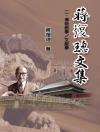This book analyzes the way in which restaurants are geographical objects that reveal locational logics and strategies, and how restaurants weave close relationships with the space in which they are located. Originating from cities, restaurants feed off the urban environment as much as they feed it ? participating in the qualification, differentiation and hierarchy of cities.
Indeed, restaurants in both the city and the countryside maintain a dialogical relationship with tourism. They can be vital players in the establishment of emerging types of gourmet tourism, sometimes even constituting as gourmet tourist destinations in their own right. They participate in the establishment of necessary conditions for local development. Some restaurants are even praised as historic sites, recognized as part of the local heritage, which reinforces their localization and their identity as a gourmet tourist destination.
Tabla de materias
Foreword ix
Introduction xi
Part 1 The Restaurant: An Eminently Urban Subject 1
Introduction to Part 1 3
Chapter 1 The Geographical Origin of the Restaurant: The Urban Environment 5
1.1 From bouillons 5
1.2 to the establishment 6
Chapter 2 The Concentration of Restaurants in the City Centers 15
2.1 A center-specific logic 16
2.2 to a logic of axes 29
2.2.1 Axial diffusion 29
2.2.2 Social diffusion 34
Chapter 3 The Geographical Diffusion of Restaurants in Provinces by Cities and City Networks 41
3.1 The geographical diffusion of restaurants in the provinces: an application of rank-size law 41
3.2 but disrupted by tourism 43
Part 2 The Restaurant in Terms of Places and Geographical Spaces 47
Introduction to Part 2 49
Chapter 4 Logics and Strategies for Locating Restaurants 51
4.1 The logic of proximity 51
4.1.1 Proximity to the political and administrative sphere and the business world 51
4.1.2 Proximity to the cultural sphere and the artistic world 54
4.1.3 Proximity to food retail and supply points 58
4.2 Accessibility logics 60
4.3 The logic of landscape charm 66
4.4 The logic of assimilation 73
4.4.1 Affectivity 73
4.4.2 Appropriation 76
Chapter 5 Restaurants in the City 87
5.1 Restaurants in small cities 88
5.2 Restaurants in average-sized cities 90
5.3 New dynamics in large cities 91
Chapter 6 Restaurants in the Countryside and the Relationship Between Cities and the Countryside 97
6.1 Restaurants in the countryside 98
6.2 The restaurant, the city/countryside relationship and nature in the city 100
Part 3 The Restaurant at the Heart of the Tourist System 111
Introduction to Part 3 113
Chapter 7 The Relationship Between the Restaurant and Tourism 115
7.1 Complementary relations between restaurants and tourism 116
7.1.1 Along the coastlines, at the beach 116
7.1.2 In the mountains 117
7.2 The interdependence between restaurants and tourism 119
7.2.1 The restaurant through tourism 119
7.2.2 The restaurant for tourism 126
Chapter 8 The Restaurant, a Tool for Gourmet Tourism 141
8.1 Cavaillon 142
8.2 Le Puy-Sainte-Réparade 147
8.3 Megève 151
Chapter 9 The Restaurant as a Gourmet Tourist Destination 155
9.1 The gourmet tourist destination: from the 3-star Michelin restaurant 155
9.2 to a network of restaurants 159
Part 4 The Restaurant as a Tool for Local Development 163
Introduction to Part 4 165
Chapter 10 Restaurants and Local Development in Urban Areas 169
10.1 At street level 169
10.2 At neighborhood level 178
Chapter 11 Restaurant and Local Development in Rural Areas 185
11.1 On the scale of the plateau 186
11.2 Across the country 193
11.3 At the village level 200
Part 5 The Restaurant: What Heritage? 207
Introduction to Part 5 209
Chapter 12 The Restaurant: From Monument to Heritage 211
12.1 The restaurant as a historical monument 211
12.2 The restaurant as a showcase for intangible cultural heritage 233
12.2.1 The repertoire restaurant 233
12.2.2 The haven restaurant 237
12.2.3 The observatory restaurant 240
12.2.4 The conservatory restaurant 243
12.3 The restaurant in heritage 248
Chapter 13 Tourists as Actors in the Process of Adding Cultural Heritage to Restaurants 251
13.1 Parisian brasseries 251
13.2 Lyon’s bouchons 258
13.3 La Mère Poulard restaurant in Mont-Saint-Michel 261
13.4 What about the bouillons? 263
Conclusion 273
References 275
Index 285
Sobre el autor
Olivier Etcheverria is Maitre de conferences at ESTHUA – the Faculty of Tourism and Culture at the University of Angers in France. His teachings and research focus on the geography of gastronomy, gourmet tourism and the intersections between gastronomy and local development.












